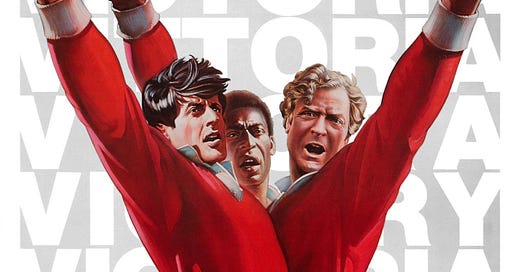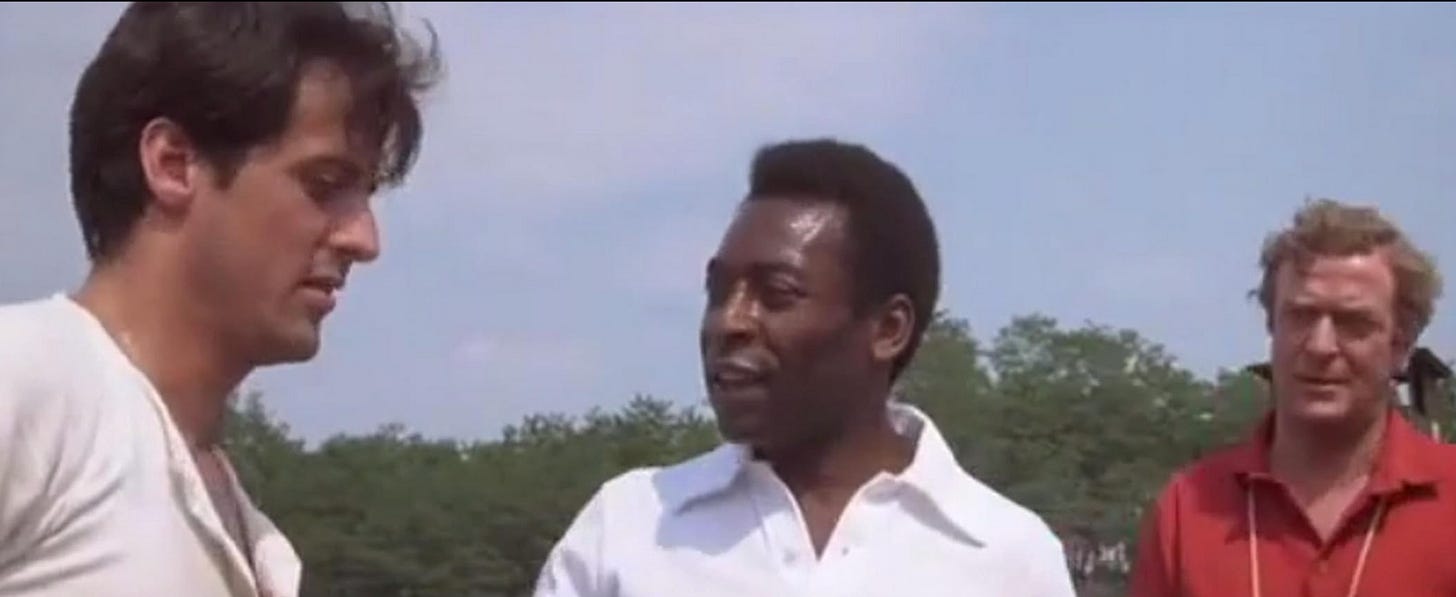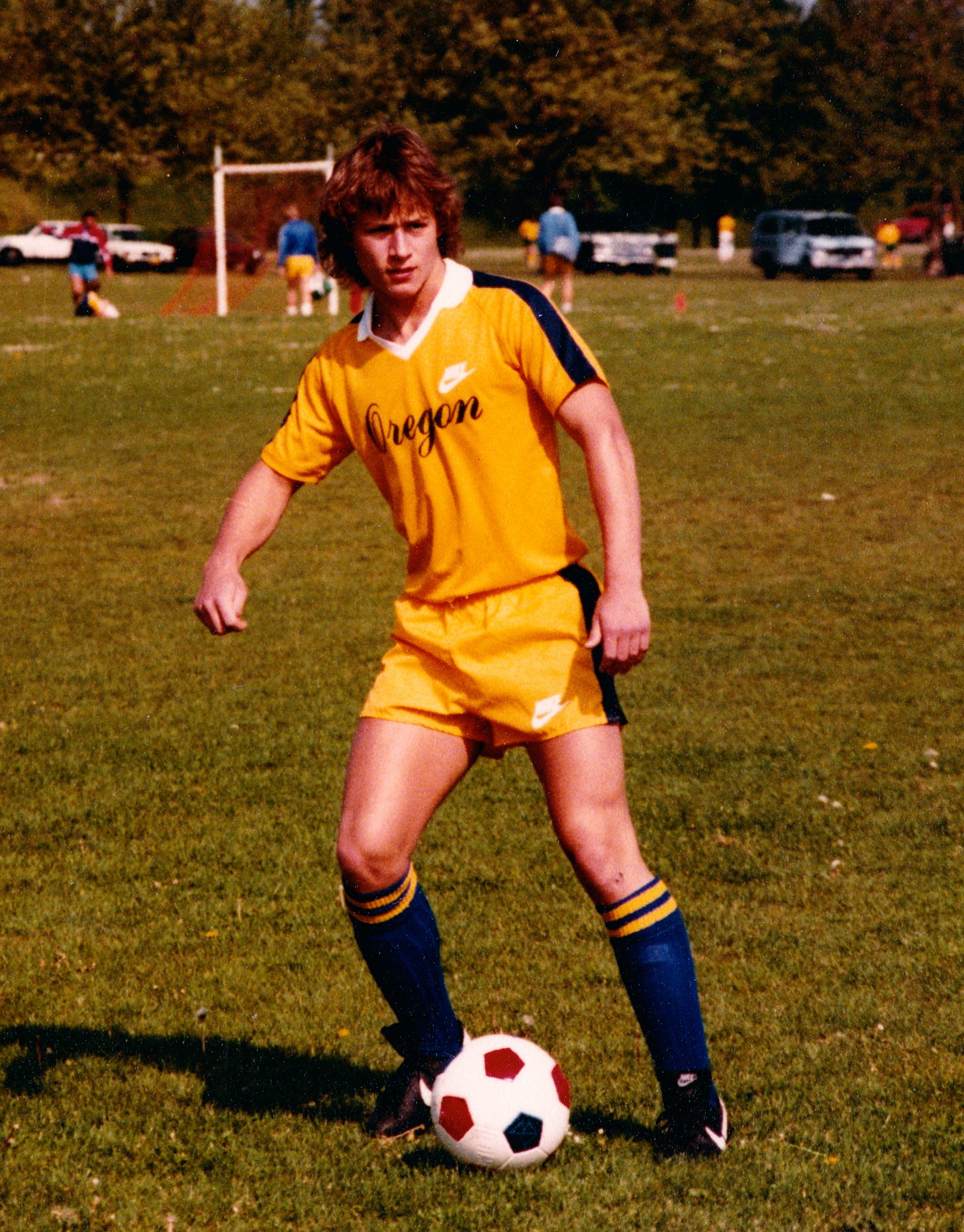You never know where research will take you. While working on a pet project, I recently rediscovered a major movie from way back in 1981.
We’re talking about Victory of course.
Haven’t heard of it? I can’t say I blame you, nor could the movie critics of the era.
But for me, Victory was a must-see at the time. All in one big-screen extravaganza, it brought together two rapidly diverging paths in my young life: World War II and soccer.
In Victory (also titled Escape to Victory), the Nazis force a team of Allied prisoners of war (POWs) to play the unbeatable German all-star Fussball team as a propaganda stunt. The Allied team: a rag-tag bunch of players turned soldiers from many nations, playing the game they love while scraping by in a POW camp.
In the convoluted plot, the big match finally takes place in occupied Paris. By now the POW team has hatched the idea of using the game to escape—at halftime. But as they play on, and not as poorly as they thought, they decide (spoiler alert!) to skip the escape and play the game to the end, believing they can actually beat the Nazis. They’ll thwart enemy propaganda and win back their pride as well—but invite retribution.
The big attraction for me at the time: Famous real players of the late 1970s appeared. There was this gifted little player who looked a lot like Pelé—and it was! The original GOAT does his tricks and cracks wise. English star Bobby Moore and the great Argentinian Osvaldo Ardiles played for the good guys among others, and Werner Roth from the NY Cosmos led the dastardly Third Reich side. Ardiles does a crafty rainbow flick over a Nazi defender. And for the money shot, Pelé hits his trademark bicycle kick right on target.
Directing the movie was American film legend John Huston. Soccer movies rarely get the movement and flow of a game right, but Huston and crew do admirable work, helped by those star players.
Playing alongside the star footballers were top-draw movie stars Sylvester Stallone, Michael Caine, and the Swede Max von Sydow as the German POW camp Kommandant (fresh off his role as Emperor Ming the Merciless in the campy Flash Gordon).
The actors did what they did best. In match close-ups, Michael Caine was shot from the waist-up running the midfield because his touch would surely give him away as no player. And there was Stallone in the net, clunkily making the crucial saves.
Through that convoluted plot, the Allied team needs Stallone’s character along for the escape, so they concoct a way to put the Yank in goal, a scheme which involved breaking the arm of the poor starting British keeper to make it look like an accident. The movie also needed an American star for the box office, of course. Stallone didn’t move like a keeper, but that was the point. He was Stallone.
In Hollywood-speak, it’s The Great Escape meets The Longest Yard. The story was unbelievable, and the feel was kind of stereotypically heroic, almost a throwback to 1940s tales. I’m pretty sure it flopped in the US. It certainly did not flop with me, even if my 15-year-old self might have pretended it had.
Because by then, I might’ve thought I was too cool for World War II.
Up until about 1978-9, my preteen self was, on the inside at least, a fairly shy and bookish kid who was happy alone in his room reading history books about the turbulent 1930s and 40s and building scale models of tanks and planes, not worrying a bit about having war nightmares or all that paint thinner going to my head.
Then, practically on a dime, my perfectly nerdy world mutated.
My body changed. I suddenly turned athletic. And I discovered soccer, inspired all the more by the booming North American Soccer League (NASL).
Devouring books and building models alone soon surrendered to endless soccer playing whenever and wherever I could—with older buddies from the neighborhood, on top amateur teams, for select youth clubs. When I wasn’t playing all the time, I’d take the downtown bus with the neighborhood crew to watch and study the (mostly British) heroes of the NASL Portland Timbers playing in Civic Stadium on harsh Astroturf.
So by the time Victory came out, I had moved on from history and World War II—or so I thought. An MA in history and my historical novels followed much later, after some wandering and finding what matters.
And now? Things are coming full circle, again. My pet project is a coming-of-age soccer novel set in the late 1970s and early 80s, during that wild yet doomed boomtime that Pelé brought to the NASL.
Stay tuned for more on that.







I remember that movie! Yes, it was crazy, but it was worth watching just for the actors and Pele.
Hollywood regularly asks us to suspend belief, or even throw it out the window, but Pele as a POW?